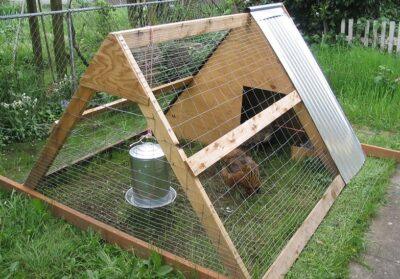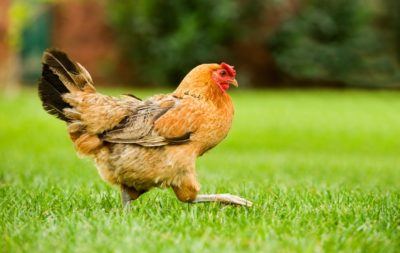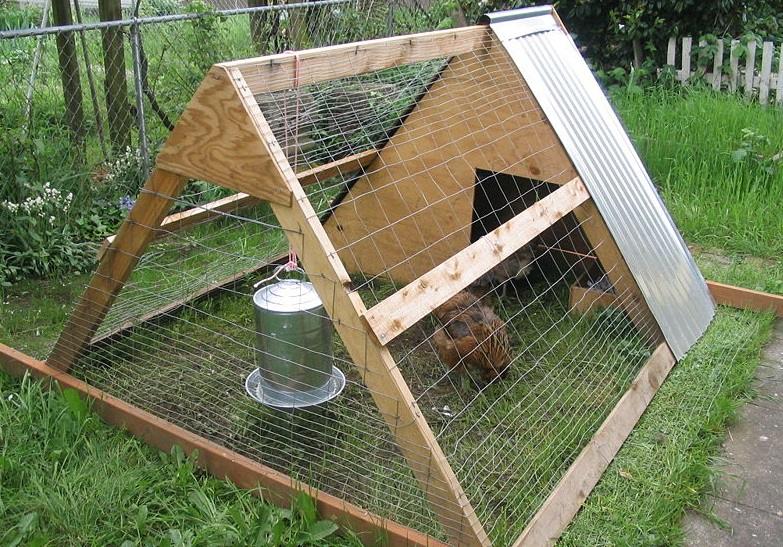
Like many farm kids, I grew up with fresh eggs every morning. I remember heading out to the chicken coop in the cool, early morning hours. Creaking open the door, I would sneak inside and move a hen out of the way to search for my breakfast. After depriving a half dozen hens of their calcium-encased embryos, I would hurry home where the smell of bacon would greet me and a breakfast of scrambled or fired eggs would soon be washed down my gullet with a copious supply of orange juice. Such was the glorious life of growing up on a farm.
The inglorious aspect of a chicken coop was that it smelled like an overflowing outhouse most of the year. Not to mention that it attracted all sorts of vermin such as rats. It was hard to keep clean, and the disgusting job of shoveling it out was one most anybody would desire to avoid.
Before I started working on a farm in my late teens, I had never seen a chicken tractor. The first time I saw one, it was a 2-feet-high square contraption made of sheet metal and chicken wire that an old man moved around his property.
“What in the world is that?” I asked.
“Son, that there is a chicken tractor!” was the reply.
Since that day, I have come to be a firm believer in the chicken tractor.
Chicken tractors can come in all sorts of shapes and sizes, from square and flat to looking like a covered wagon. They provide all the aspects needed to raise chickens: an open foraging area, a place to roost and nesting boxes. Watering stations are included as well.
Chicken Coops: 45 Building Ideas For Housing Your Flock
 The first thing one will notice about a chicken tractor is they don’t stink like a cess pool. In fact, they don’t smell at all. They are much easier to clean, and all of the chicken refuse goes into the soil as a high-quality fertilizer. Several chicken tractors in a field over a month will fully fertilize the field!
The first thing one will notice about a chicken tractor is they don’t stink like a cess pool. In fact, they don’t smell at all. They are much easier to clean, and all of the chicken refuse goes into the soil as a high-quality fertilizer. Several chicken tractors in a field over a month will fully fertilize the field!
You will also notice an increase in the quality of your eggs and poultry. In fact, I have noticed an increase in the number of eggs produced and a decrease in the number lost to vermin. The eggs and meat taste much better, and are much healthier on account of being almost “free-ranged.”
The birds forage on insects and plants, causing your cost of feed to plummet. I have found that I feed birds less than half of what they eat when in an enclosed chicken coop and yard. Chicken tractors do require relocation every day or so, because the birds will strip the grass and forage they are located on within 24-26 hours.
And don’t think just only chickens can be raised in a chicken tractor. I have seen turkey and pheasants raised in somewhat larger tractors. These birds are already naturally tasty, and a free-ranged diet makes them even more so. In fact, I have always found turkeys a hardier species and easier to raise.
If you, too, adopt the chicken tractor method of raising poultry, you will find increased output of eggs, higher quality poultry and healthier fields. This method is not for everyone, as you will have to move the tractors almost daily to provide adequate forage. Some folks will be limited if they only have an acre or so of land. But, for those with a couple acres or more, you will soon find such a method beneficial for conserving resources — and improving output and quantity.
Do you use chicken tractors? Share your tips for using them in the section below:
Dangerous New Trends Are Increasing The Potential For A Food Shortage. Read More Here.










